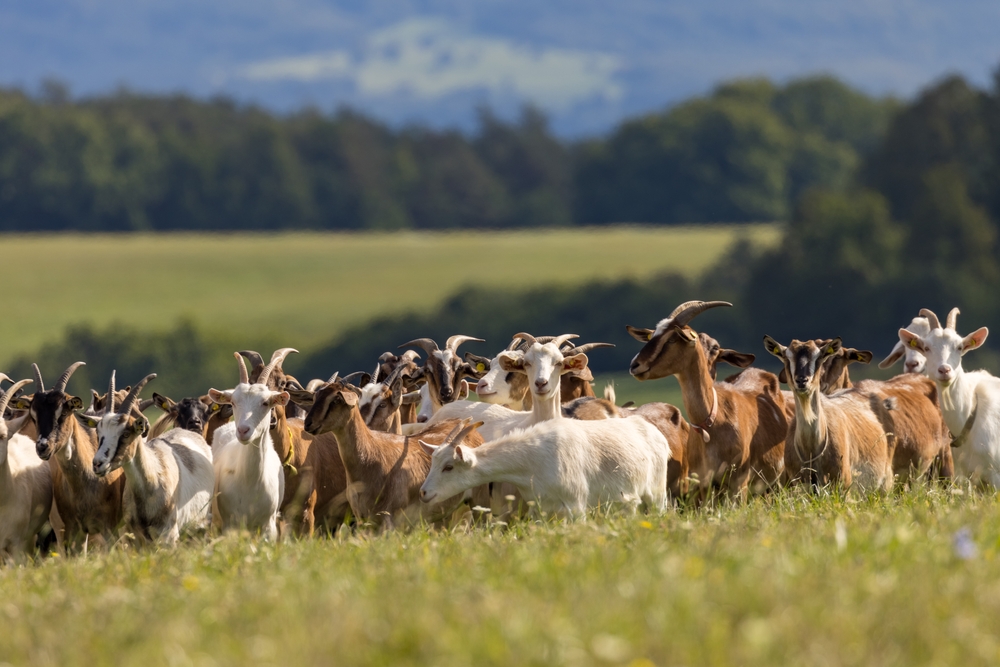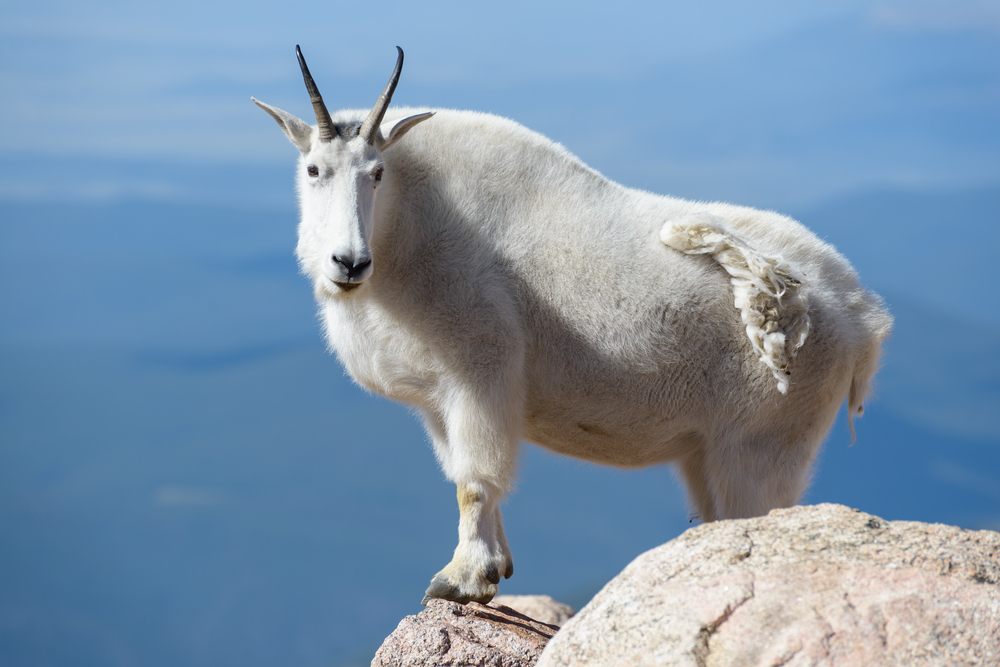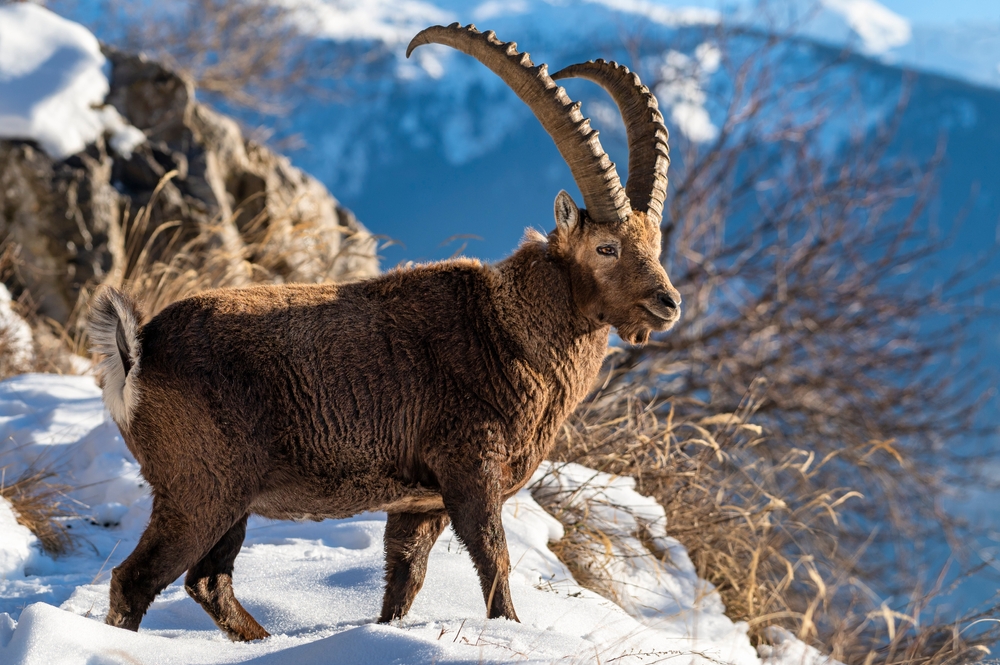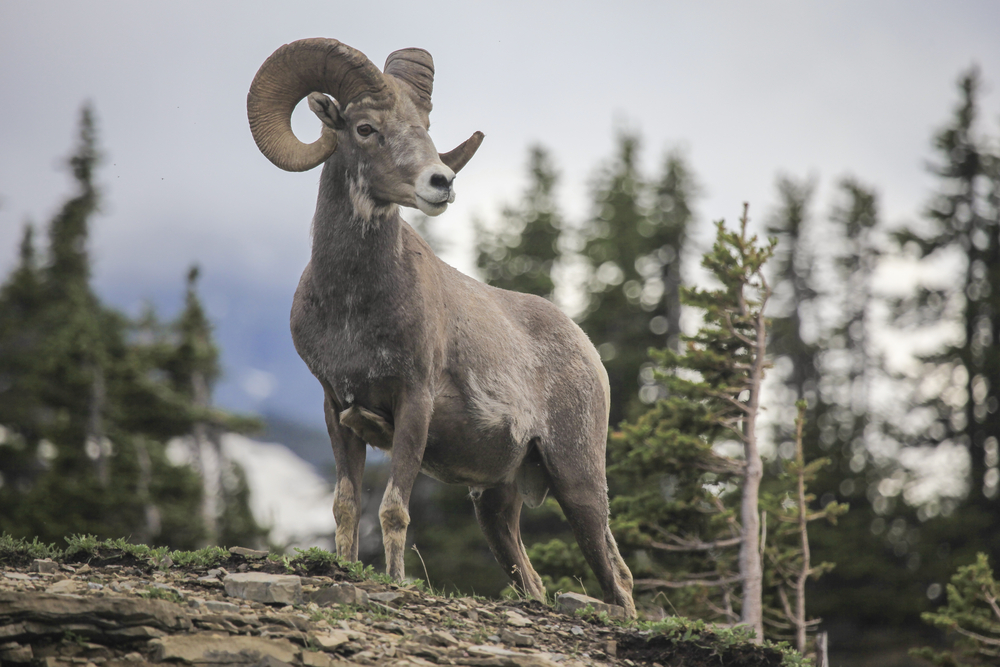The domestic goat (Capra hircus) is most closely related to the bezoar ibex (Capra aegagrus), its wild ancestor native to parts of the Middle East and Central Asia. It is also closely related to other wild goats in the genus Capra, such as the Alpine ibex and Siberian ibex.
About
The domestic goat (Capra aegagrus hircus) is one of humanity’s oldest domesticated animals, valued for its milk, meat, fiber, and hides. It belongs to the family Bovidae, which also includes sheep, cattle, antelope, and bison. Domesticated over 10,000 years ago in the Fertile Crescent from the wild bezoar ibex (Capra aegagrus), goats have spread worldwide and now thrive in nearly every climate, from arid deserts to high mountain pastures.
Domestic goats are highly adaptable, with more than 300 recognized breeds varying greatly in size, coat type, and production traits. They typically weigh between 20–140 kg (44–310 lbs), depending on the breed. Coat colors range from solid white or black to patterned mixes of brown, gray, and tan. Goats are known for their agility and browsing habits, feeding on shrubs, weeds, and other vegetation often ignored by grazing animals like sheep and cattle.
Goats serve multiple agricultural roles:
-
Dairy production – Breeds like the Saanen, Nubian, and Alpine produce milk rich in butterfat, ideal for cheese, yogurt, and other dairy products.
-
Meat production – Breeds such as Boer and Kiko are raised for tender, flavorful meat.
-
Fiber production – Angora goats yield mohair, while Cashmere goats produce fine cashmere wool.
-
Land management – Goats are effective in controlling invasive plants and reducing wildfire risk through targeted grazing.
They are intelligent, curious, and social animals, often forming close bonds with humans. Their reproductive efficiency—frequent twinning and short gestation periods—makes them a sustainable livestock choice in many regions.
Today, domestic goats contribute significantly to rural economies, subsistence farming, and specialty agricultural markets. Their resilience, versatility, and relatively low maintenance needs ensure their continued importance in global livestock systems.
Physical Characteristics
Domestic goats (Capra hircus) are highly variable in appearance due to centuries of selective breeding for meat, milk, fiber, and companionship, but they share common physical traits:
-
Coat: Hair length, thickness, and texture vary widely—ranging from short and sleek to long and shaggy. Coat colors include solid, spotted, or patterned combinations of white, black, brown, gray, and tan.
-
Head: Narrow to medium-width head with a straight or slightly convex profile; ear type varies from erect (Swiss breeds) to long and pendulous (Nubians).
-
Horns: Most breeds have horns, though some are naturally polled; horn shape ranges from short and straight to long and spiraled. Both sexes may have horns.
-
Body: Medium-framed, leaner in dairy breeds and more muscular in meat breeds. Deep chest and strong legs suited for climbing and foraging.
-
Tail: Short, carried upright, often with a small tuft of hair.
-
Skin: Flexible and often pigmented, with sweat and scent glands near the horns in some breeds.
Size:
-
Length (Body): Approximately 3.5 to 4.5 ft (1.1 to 1.37 m) from head to rump.
-
Shoulder Height: Around 1.5 to 3 ft (0.45 to 0.9 m), depending on breed.
Weight:
-
Adult Female (Doe): Typically 45 to 190 lbs (20 to 86 kg).
-
Adult Male (Buck): Usually 100 to 250 lbs (45 to 113 kg), with some large breeds exceeding this.
Domestic goats’ wide range of sizes, coats, and horn types reflects their incredible adaptability, making them one of the most versatile livestock species in the world.
Reproduction
Domestic goats are prolific breeders with reproductive patterns that vary depending on breed, climate, and management system:
-
Mating and Breeding Season:
-
Many breeds are seasonal breeders, with peak fertility in the fall, leading to spring kidding.
-
Tropical and some meat breeds can breed year-round in favorable conditions.
-
Both natural mating and artificial insemination (AI) are used in herd management.
-
-
Gestation:
-
The gestation period lasts about 150 days (roughly 5 months).
-
-
Birth and Kidding:
-
Most does give birth to twins, though singles and triplets are common, and quadruplets are possible.
-
Kidding is typically smooth, with minimal assistance required in healthy animals.
-
-
Kid Characteristics at Birth:
-
Newborns generally weigh 5 to 9 lbs (2.3 to 4.1 kg).
-
Kids are precocial—standing and nursing within minutes to hours after birth.
-
-
Maternal Care:
-
Does are attentive mothers, nursing kids for 2 to 3 months in meat and dual-purpose systems, or less in dairy herds where kids are bottle-fed.
-
-
Maturity and Breeding Readiness:
-
Does can be bred as early as 7 to 10 months, though most producers wait until 12 months for optimal growth before first kidding.
-
Bucks may begin breeding as early as 4 to 6 months, though full breeding performance is reached at 1 year or older.
-
Domestic goats’ high fertility, short gestation, and frequent multiple births make them one of the most efficient small livestock species for meat, milk, and fiber production worldwide.
Lifespan
In Production Systems:
Domestic goats typically live 8 to 12 years, though many in commercial meat or dairy operations are culled earlier for economic reasons.
In Small-Scale or Hobby Farming:
With moderate production demands and good care, goats often live 12 to 15 years.
In Ideal or Sanctuary Conditions:
Without production pressures, some goats can live 15 to 18 years, and rare cases exceed 20 years.
Threats to Longevity:
-
Reproductive Stress: Frequent kidding can shorten a doe’s lifespan.
-
Parasites: Internal parasites, especially barber pole worms, are a leading health concern in many climates.
-
Disease: Susceptible to conditions like caprine arthritis encephalitis (CAE), caseous lymphadenitis (CL), and pneumonia.
-
Nutrition: Poor diet or mineral deficiencies (especially copper, selenium, and calcium) can reduce health and lifespan.
-
Predation: In some regions, small livestock predators like coyotes, stray dogs, and big cats pose a risk.
Domestic goats’ adaptability, hardiness, and reproductive efficiency contribute to their popularity, but proactive health care is key to reaching their full lifespan potential.
Eating Habits
Domestic goats are highly adaptable foragers, known for their browsing preference and ability to utilize a wide range of vegetation:
-
Primary Diet:
-
Prefer browse such as shrubs, woody plants, and vines.
-
Will also graze on pasture grasses including Bermuda, ryegrass, and clover.
-
Commonly consume weeds and invasive plants, making them valuable for pasture improvement and land clearing.
-
-
Forage Efficiency:
-
Can thrive on lower-quality forage better than many livestock species, though productivity improves with nutrient-rich feed.
-
-
Supplemental Feeding:
-
Fed hay (grass or legume) during non-grazing seasons.
-
Grain concentrates (corn, oats, barley) provided for lactating does, growing kids, or breeding bucks.
-
Require mineral supplements formulated specifically for goats to avoid imbalances, particularly with copper.
-
-
Water Needs:
-
Need constant access to fresh water; intake increases during lactation or hot weather.
-
-
Feeding Behavior:
-
Curious, selective feeders that move frequently between plants.
-
Often stand on hind legs to reach leaves and branches above ground level.
-
Domestic goats’ browsing habits and dietary flexibility make them excellent for integrated farming systems, brush control, and sustainable livestock production.
Uniqueness
The domestic goat (Capra hircus) is one of humanity’s oldest and most versatile livestock species, with traits that make it stand out:
-
Extraordinary Adaptability: Thrives in environments ranging from arid deserts to humid tropics and cold mountains.
-
Browsing Preference: Naturally seek out shrubs, vines, and woody plants rather than relying solely on grass, making them valuable for brush control and land management.
-
High Reproductive Potential: Short gestation, frequent multiple births, and early maturity allow for rapid herd growth.
-
Diverse Utility: Provide meat, milk, fiber (cashmere, mohair), hides, and even serve as pack animals in some regions.
-
Global Distribution: Found on every continent except Antarctica, with over 300 recognized breeds adapted to local needs.
-
Climbing Ability: Agile and sure-footed, able to scale steep slopes, rocky outcrops, and even trees in search of food.
-
Cultural Importance: Integral to many traditional farming systems, religious rituals, and rural economies worldwide.
The domestic goat’s combination of adaptability, productivity, and versatility has made it one of the most important and enduring livestock species in human history.
Be the First to Share Photos of This Species.
FAQ’s
1. What is the closest species to the Domestic Goat?
2. How does the Domestic Goat compare to other goat species?
Domestic goats are far more diverse in size, shape, and productivity than wild goat species, due to centuries of selective breeding for meat, milk, fiber, and adaptability.
Compared to wild goats, they have a wider range of coat colors, more docile temperaments, and higher reproductive rates, but less extreme climbing ability in most breeds.
3. What national parks provide the best chances to see a Domestic Goat?
While domestic goats are not a wild species, they can be seen in farming communities and pastoral landscapes surrounding parks, and in some cultural heritage or demonstration areas within them, including:
-
Great Smoky Mountains National Park area (USA) – small farms nearby keep heritage and dairy goats.
-
Kruger National Park buffer zones (South Africa) – local communities raise goats for meat and milk.
-
Chitwan National Park region (Nepal) – village goat herds are common along park boundaries.







































































